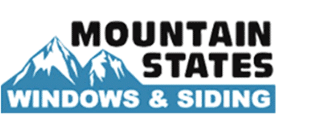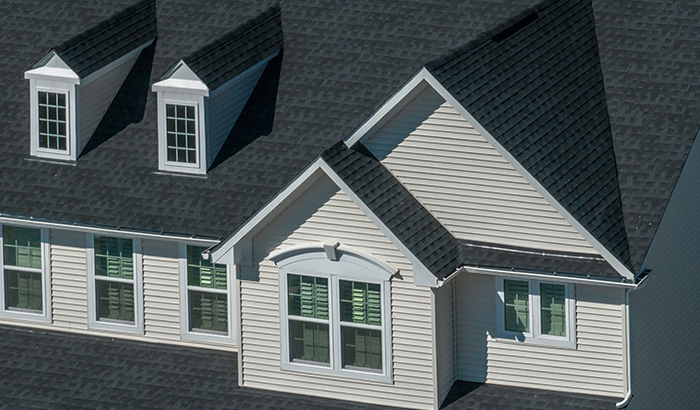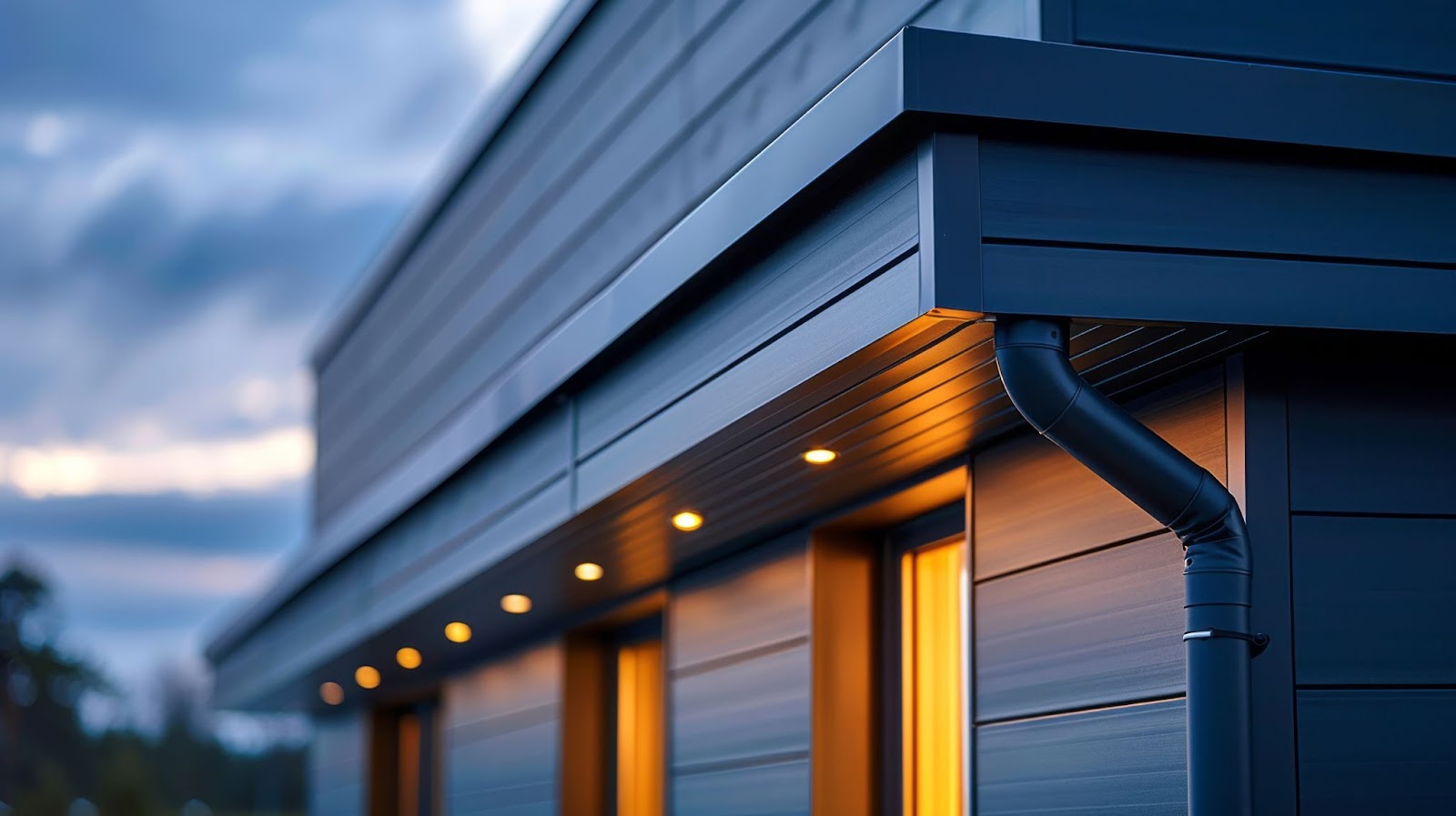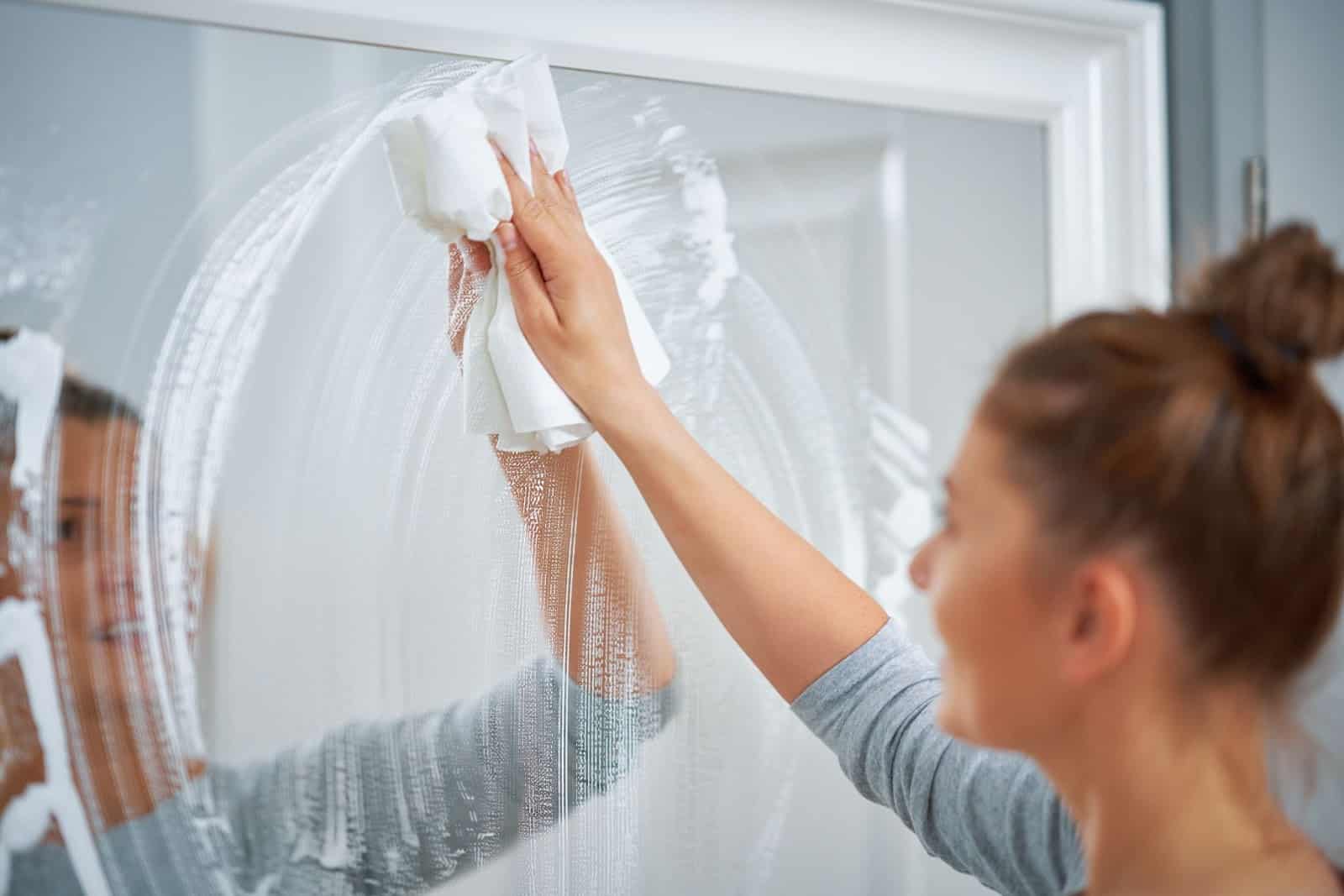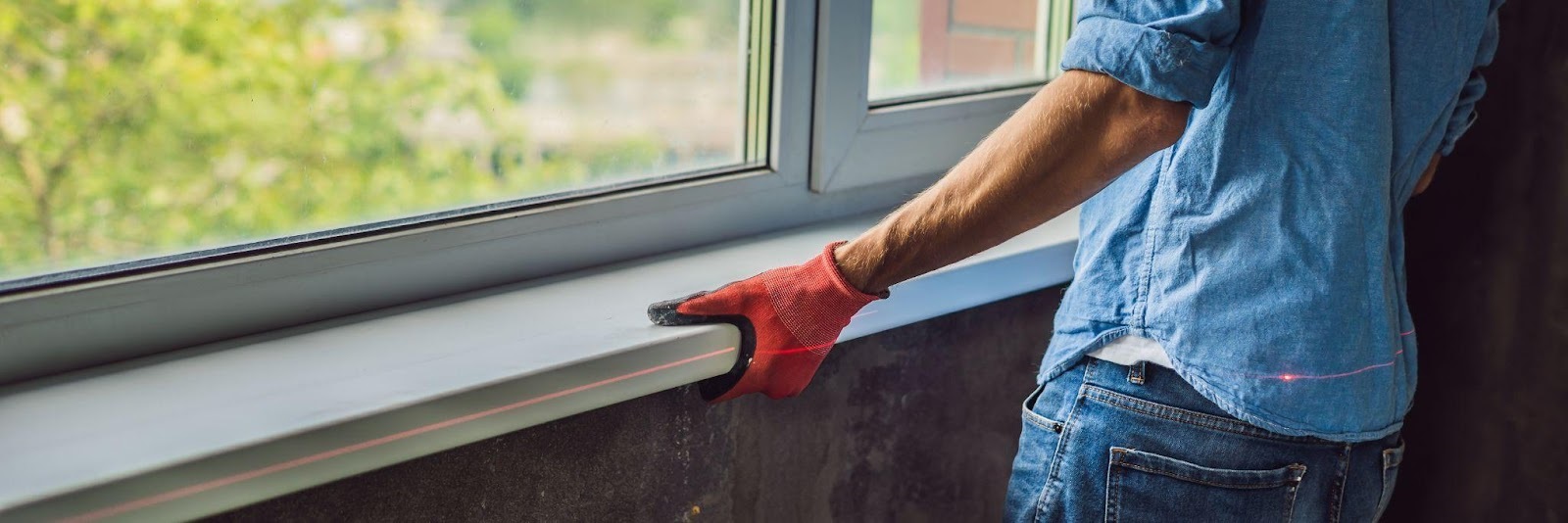Fiber cement siding is one of the more popular choices among property owners when selecting exterior building materials.
Fiber cement board and siding is so popular that you might have seen it but didn’t realize that’s what it was. This material can resemble stucco, wood grain, and other materials that have been around for decades. It is incredibly durable and finds its way onto more and more properties due to its high resale value, great appearance, and fire resistance.
If you have ever wanted a low-maintenance exterior material for your property, fiber cement siding may be the right choice. Need to know more? Today, we’re filling you in on everything you need to know about fiber cement siding and board.
Continue reading below to find out more.
What is Fiber Cement Siding and Board?
Fiber cement siding for a house is a durable, low-maintenance material commonly used to cover the exteriors of homes and commercial buildings. It is made with cellulose fibers, sand, and cement, making it highly durable and long-lasting.
While different manufacturers will use different ingredients and portions to make fiber cement siding, generally speaking, it includes Portland cement, which is made of clay, limestone, iron, fly ash or sand, water, and wood pulp or cellulose fibers. Some manufacturers add a few proprietary ingredients to increase durability and improve binding.
The Advantages of Fiber Cement Siding and Board
Here are some of the perks of opting for fiber cement siding:
- Low-Maintenance — Fiber cement siding is easy to care for and maintain. It is a fade-resistant material, meaning its original finish lasts more than 15 years. If you paint over it, you may need to repaint it in five or ten years.
- Highly Durable — Fiber cement siding holds up incredibly well against harsh elements, rot, fire, insects, and more. It is inedible to birds and insects (unlike wood, which attracts carpenter ants, beetles, termites, and woodpeckers). A lot of damage can be addressed using specific fiber cement repair kits. When damage does occur that cannot be fixed with a fiber cement repair kit, most manufacturers offer warranties, some lasting up to 50 years.
- Insulating Properties — Fiber cement siding and board are energy efficient and significantly insulate your property. This means that utility bills can get lower when siding is installed properly, keeping your hard-earned money in your wallet.
The Drawbacks of Fiber Cement Siding and Board
It’s not all sunshine and rainbows with fiber cement siding. Here are some of the disadvantages homeowners may face:
- Costly Investment — High-quality materials often have higher upfront costs and labor expenses. So, if you are working with a small budget, using fiber cement siding and board may not be possible. However, its durability and low-maintenance qualities make it a worthwhile investment for many property owners.
- Potential Mold and Mildew Issues — While fiber cement board and siding are water resistant, a poorly placed downspout could allow moisture to permeate the material and cause issues such as mold and mildew. This is true for other building materials and can easily be avoided by having a trusted and reputable professional install your gutter system.
- Very Heavy — This material is very dense, unlike other types of siding, such as vinyl or aluminum. For every 100 square feet, fire cement siding can contribute up to 300 pounds.
- Environmental Footprint — While energy efficient, fiber cement siding is not an entirely eco-friendly material since it contains cement (an energy-intensive material). It cannot be recycled but is not toxic when it inevitably breaks down.
- Quite Dusty and Brittle — When cut through, fiber cement siding produces fine silica dust, which requires workers (and anyone else around) to wear a protective dust mask. It can be brittle and prone to cracking when working with the product, so purchasing additional materials may be necessary.
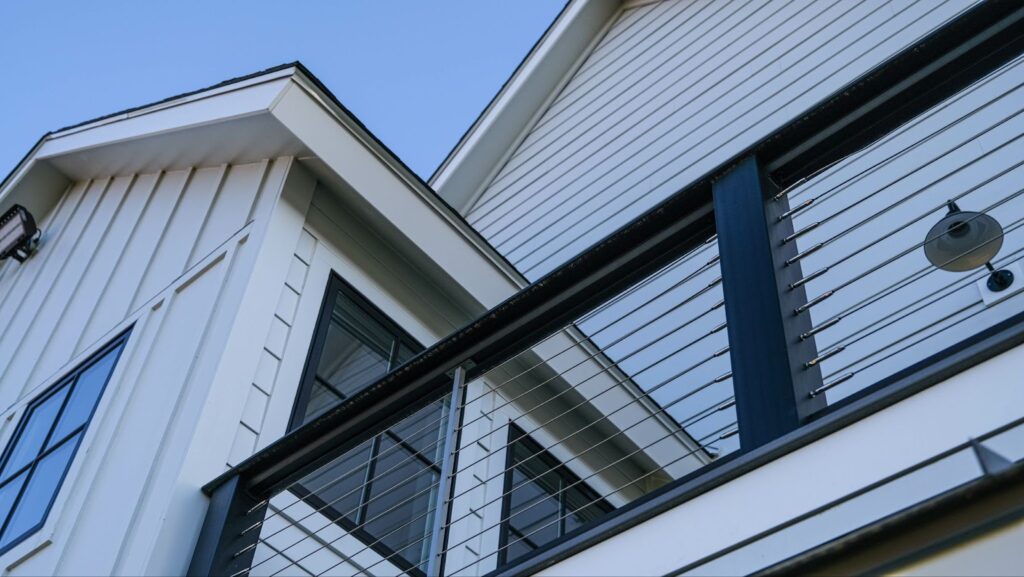
5 Characteristics of Fiber Cement Board and Siding
Here are some of the characteristics of fiber cement board and siding:
- Styles — Fiber cement comes in all shapes and styles. It can come in planks, similar in size to vinyl siding. The planks can be installed either vertically or horizontally. This material also comes in shingles and sheet form, which can be used as an insulating underlayment for tile. This material comes in various finishes and textures, from wood grain to smooth and stucco to rock-like textures, making a perfect fiber cement siding for a house.
- Sizes — Fiber cement is available in planks, similar in dimensions to vinyl siding, ranging from 4 to 10 or more inches. Its shackle form typically comes in individual one- or two-foot shakes and four-foot, eight-foot, and 12-foot strips. Sheets or beads come in various sizes, including two- and four-by-eight panels.
- Cost — Fiber cement siding and board averages between $9 to $10 per square foot, including parts and labor. It sits on the lower end of the costs of various types of building materials. Some materials can cost between $25 to $50 per square foot. Property owners can expect to pay between $27,000 to $30,000 to install fiber cement on a 1,500-square-foot building.
- Durability and Maintenance — While we already mentioned a bit about the durability and low-maintenance qualities of fiber cement siding and board, we have to bring it up again. This material is resistant to many environmental factors that make up its durability and keep maintenance to a minimum. It is a durable cement, making it resistant to rot, insects, fire, deterioration, and fading from salt and sun. Fiber cement repair kits are easy to use when necessary. It is also paintable and impact-resistant. It comes in unpainted and pre-painted forms. Pre-painted sheets shouldn’t need to be repainted for at least 15 years. It could need repainting within five to 10 years if you paint it. Property owners will love how easy it is to maintain because it only requires washing every six to 12 months (or as needed). Only mild dish soap, water from a garden hose, and a soft-bristled brush are necessary to wash the exterior surfaces.
- Installation — Half of the cost that property owners pay for fiber cement siding is the installation fee. This is because the job is challenging. Some people opt to make a DIY project out of fiber cement installation; however, we never recommend doing it yourself. This job is complex, and the material is easily breakable during installation.
Fiber Cement Siding vs. Other Types of Siding
Choosing fiber cement siding for a house or commercial building is a great option. It is an alternative to natural wood, stucco, stone, brick, vinyl, and aluminum. While fiber cement siding has received some unwarranted criticisms following faulty installations, it remains one of the more durable siding materials in the industry.
Below, you’ll find a quick comparison between fiber cement and various other types of siding:
Wood Products vs. Fiber Cement Board Siding
Wood siding, shakes, and panels give a building timeless beauty, and many property owners value the way its appearance gradually and subtly changes as time passes.
Some homeowners opt to save on installation costs by doing the work themselves, but wood products demand a high level of care and maintenance. The cost to have wooden shakes or siding installed is nearly twice the cost of fiber cement.
As mentioned above, fiber cement can be manufactured to look like wood. So, if you want the benefits of fiber cement materials and nothing near the responsibility of wood exteriors, fiber cement could be right for you.
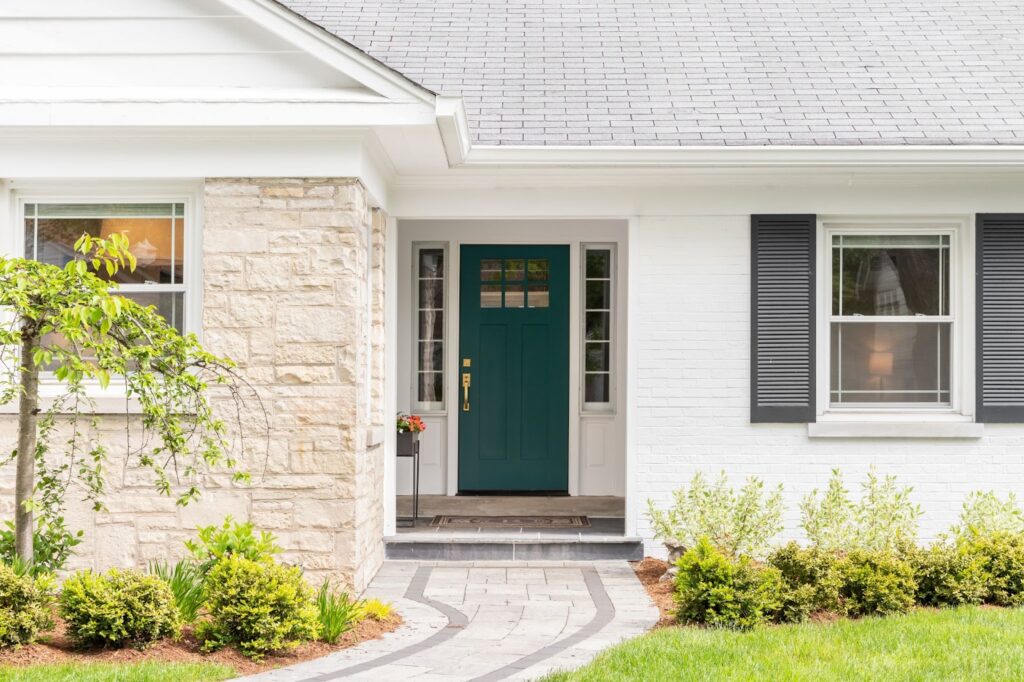
Brick and Stone vs. Fiber Cement Siding and Board
Stone and brick are considered by many to be the top-tier types of exterior building materials because they add a level of structural integrity to a property’s walls. They also provide a significant amount of insulation and protection against the elements.
With those boastful qualities comes a hefty price tag. Brick and stone are among the most expensive exterior materials, ranging from $25,000 to over $70,000 to cover a home.
Unless the property owner is an experienced mason, installing stone or brick should never be a DIY project. These materials are extremely heavy and thus require the installation of a brick ledge to help support them. Excavation and concrete work will be necessary if the property does not already have an existing brick ledge.
Vinyl Siding vs. Fiber Cement Siding
If a good balance of budget and functionality is the top priority and concern when looking for the right home exterior material, vinyl siding is a competitive alternative to fiber cement siding.
Vinyl siding is durable, affordable, easy to maintain, and a great way to improve the look of your property that won’t break the bank.
While most modern vinyl products are resistant to insects and rot and are colorfast, vinyl siding (like fiber cement siding) is not 100% maintenance-free.
Depending on the climate and weather patterns where you live, vinyl siding can be vulnerable to weather and heat damage, making occasional repairs necessary. Even still, the price tag is competitive and appeals to many property owners.
Aluminum Siding vs. Fiber Cement Siding
Aluminum siding is among the most affordable. It is lightweight, the installation is easy, and the product is rot, insect, and fire resistant; however, it is highly prone to dents and damage upon impact. An intense hailstorm can leave an entire wall of a house with noticeable dents that cannot be removed.
Compared to fiber cement siding, aluminum siding is a lot more affordable. But it’s important for property owners to understand that its lack of durability means more repairs and replacements are required.
And with those repairs and replacements comes a hefty price tag. Because of this, more and more homeowners are opting for other, better, and more durable siding choices available today.
Stucco vs. Fiber Cement Siding and Board
The last comparison is fiber cement siding and stucco. In various regions across the United States and throughout the world, stucco is a popular choice among homeowners.
It is often used on Tuscan-style and southwestern-style homes. Stucco is a premium product that comes with a high price tag. Installing stucco can cost even more in regions where it isn’t as popular.
While a professional may make the installation process look easy, stuccoing a property is anything but simple, and all DIY projects should be avoided. The material should be applied in layers to achieve a strong, sturdy stucco exterior, with the semi-solid compound laid over a metal lath for durability and stability.
Tips for Choosing Your Fiber Cement Siding and Board
- For a more eco-friendly option, select fiber cement products that contain large percentages of wood fiber from industrial or post-consumer waste.
- Speaking of eco-friendly, products that are made with fly ash are better than those made from Portland cement.
- Always opt for low-VOC primers, paints, and sealants for use with your fiber cement products.
Upgrade Your Home Exteriors with Mountain States Windows & Siding
Whether you want to upgrade the exteriors of your property with fiber cement siding or another type, like vinyl, the Mountain States Windows & Siding professionals are here to help!
At Mountain States, we’ve worked hard to build our reputation as a trusted, hassle-free home improvement company. Our devoted team believes in providing our customers with more than just modern siding and windows — we work to ensure each project runs smoothly from start to finish.
We are dedicated to providing our customers with high-quality materials, top-tier products, and above-and-beyond services that will improve your home’s look, function, and value. When you choose Mountain States, you choose honest, premium, and friendly service with a smile.
Our team serves Salt Lake City, Park City, Payson, Lehi, and many areas in between. If you are taking on a renovation project, be sure to consider Mountain States Kitchen & Bath for all your remodeling needs.
Contact our team to get started today!
